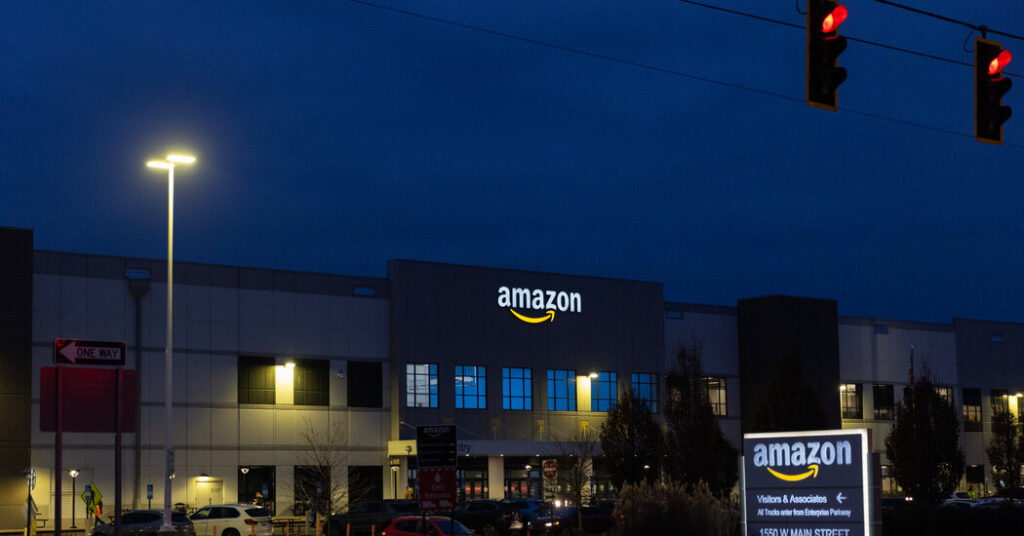Despite Amazon’s attempts to stay out of the limelight during President Trump’s trade conflict, the retail giant couldn’t escape its impact.
Initially, Amazon found itself in a brief skirmish with the White House regarding a misleading report suggesting that the company would display tariff costs to its customers.
A couple of days later, Amazon faced the harsh economic reality with a report showing one of the slowest growth rates in its North American retail segment.
This area is Amazon’s largest market and contributed to the first-quarter results highlighting the slowest overall sales growth since the height of the pandemic, as reported on Thursday. Sales from January to March totaled $155.7 billion, a 9 percent increase compared to the previous year. Profit hit $17.1 billion, a 64 percent rise.
For the current quarter ending in June, Amazon has notified investors to anticipate sales between $159 billion and $164 billion, with operating profits potentially dropping to as low as $13 billion. The company listed “tariff and trade policies” among the uncertainties that could affect its forecasts.
The results presented a mixed bag relative to Wall Street expectations, causing Amazon’s stock price to fall over 3 percent in after-hours trading following the earnings announcement.
“Clearly, none of us can predict where tariffs will ultimately settle or when,” said Andy Jassy, Amazon’s CEO, during an investor call. He emphasized the company’s commitment to keeping prices low by pre-purchasing inventory in anticipation of tariffs and assisting sellers on Amazon’s marketplace in a similar manner.
Investors are trying to decipher how President Trump’s fluctuating tariffs could impact Amazon’s customer base. Some hypothesized that consumers might have ramped up purchases in March and April to beat impending tariffs, increasing spending in an otherwise unpredictable market.
Mr. Jassy noted that Amazon customers had engaged in some “heightened buying” of specific product categories, though he did not specify which ones.
Multiple factors contribute to revenue in Amazon’s retail segment. Direct online product sales experienced a 5 percent growth, reaching $57.4 billion, while services offered to sellers listing products on its platform increased by 6 percent to $36.5 billion.
Advertising, viewed by investors as a lucrative potential, surged by 18 percent to $13.9 billion.
Investors have consistently monitored Amazon’s cloud computing segment, which accounts for the majority of the company’s profits. Mr. Jassy, who previously managed the cloud division before becoming CEO, is focusing on enhancing the company’s artificial intelligence capabilities. In the first quarter, the cloud business grew 17 percent to $29.3 billion.
Mr. Jassy stated that Amazon could have expanded its cloud services further if it had greater capacity in its data centers—remote facilities equipped with computers that support the modern internet and A.I. He also mentioned that he anticipates these constraints will lessen in the upcoming months. The company is swiftly building more infrastructure, revealing that it spent over $24 billion on capital expenses in the initial three months of the year, which is approximately $2 billion less than the previous quarter. In February, Amazon announced plans to allocate about $100 billion for capital expenditures by 2025.

